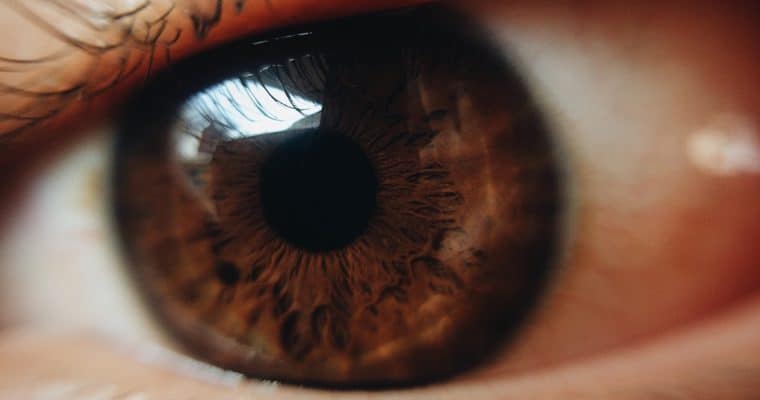In the realm of beauty, red eyes are often considered a beauty faux pas, prompting many to reach for redness-relief drops. However, beneath the surface, chronic red eyes might signify more than just a lack of sleep. If you’re grappling with persistent redness, a visit to your eye doctor is crucial for a comprehensive evaluation.
Understanding the Complexity of Dry Eyes:
Diagnosing the cause of dry eyes is no easy feat without the keen eye of an optometrist using a slit-lamp microscope. The myriad of potential causes makes it imperative to seek professional evaluation.
The Era of Redness Relief:

Enter the ’90s, where Clear Eyes commercials featuring Ben Stein dominated the airwaves. The monotone charm might have been entertaining, but the effectiveness of redness-relief eye drops came with its own set of costs.
Why the Warning Against Redness-Relief Eye Drops:
Most redness-relief drops contain decongestants triggering vasoconstriction, reducing blood flow and oxygen. Paradoxically, this lack of oxygen signals the brain to stimulate neovascularization, leading to an increase in redness over time. The cycle of vasoconstriction, neovascularization, and rebound vasodilation creates dependency and overuse, exacerbating redness.
Neovascularization is also very common in contact lens wearers due to a lack of oxygen transmitting through the contact lens. It is very important to change your contact lenses as directed and to clean them properly to get the most oxygen transmissibility.
Some popular redness-relief eye drops to avoid include Opcon-A, Naphcon-A, clear eyes, and Visine.
So what can you do to help relieve red eyes?

A Glimmer of Hope: Lumify
In 2018, Bausch & Lomb introduced Lumify, derived from a glaucoma eye drop. Lumify optimizes blood flow from larger vessels while effectively constricting superficial vessels causing redness. However, caution is advised, as Lumify can be drying and may worsen symptoms if dry eyes are the root cause.
As a general rule, If you need redness relief, then Lumify can be a good option. Keep in mind that Lumify is very drying and if the cause of your red eyes is dryness, then Lumify can exacerbate your dry eye symptoms.
Make sure to talk to your doctor if you are using Lumify and only use it as directed. Discontinue use if you develop an allergic reaction.
Identifying Red Eye Triggers:
- Smoke exposure
- Environmental irritants
- Inflammation
- Dry Eyes
- Conjunctivitis (pink eye) (click here for more information on conjunctivitis)
- Allergies (click here to learn how to combat itchy eyes)
- Cold or Flu
- Contact lens overwear (click here to learn more about contact lens overwear)
- Glaucoma
- Eye drops that treat glaucoma (click here to learn more about glaucoma eye drops)
- Eyelash growth serums (ie: Latisse)
- False eyelashes
- Meibomian Gland Dysfunction/Blepharitis (click here to learn more)
- Eyelid laxity (aging skin)
- Eye injury or surgery
- Eye rubbing
- Stress
- Lack of sleep
- Excessive screen time on electronic devices
- UV exposure
- Radiation
A myriad of factors, from environmental irritants to contact lens overwear, can contribute to red eyes. Regular eye check-ups are crucial, providing insights into maintaining eye health.
The Power of Artificial Tears:

Enter artificial tears, a safe and effective alternative for redness relief. When used properly, they lubricate and moisturize eyes without the rebound redness associated with some eye drops. Using preservative-free drops is recommended for frequent use, ensuring cleanliness and preventing allergic reactions.
How to use Artificial tears:
Artificial tears are used to lubricate and moisturize our eyes. Usually, it is recommended to use artificial tears 3-6 times per day depending on your symptoms. Refer to the dry eye post for more treatment options.
If you need artificial tears more than 4 times per day then make sure to use preservative-free drops. When using preservative-free Artificial tears it is important to always open a fresh vial each day.
Always wash your hands before touching your eyes and make sure that the tip of the bottle does not touch your eye. It is ok to insert the drop anywhere into your eye as long as it gets in.
Always check the expiration date on the bottle or box and make sure the tip of the bottle looks clean.
Navigating Side Effects:
Side effects of artificial tears are minimal, with allergies often linked to preservatives. Antihistamine eye drops may alleviate itching but could induce dryness. Temporary blurred vision is a rare occurrence due to drop thickness. Contact lens wearers are reminded to choose drops specifically formulated for their lenses.
There are very few side effects with the use of artificial tears. Allergy to artificial tears usually is due to preservatives in the eye drops. The symptoms of an allergy can be redness, burning, and itching. Switching to a preservative-free eye drop may relieve the allergy symptom.
For itchy eyes due to allergy antihistamine eye drops (such as Zaditor or Alaway) can be effective; however, the antihistamine can cause more dryness.
Another potential side effect is temporary blurred vision, usually due to the thickness of the drops. Some artificial tears have a milky appearance that causes a temporary fog after installation for a few minutes.
If you wear contact lenses make sure to use eye drops specific for contact lenses.
The Takeaway:
In the pursuit of clear, vibrant eyes, understanding the causes and choosing the right solutions is paramount. Artificial tears and Lumify emerge as top contenders, steering clear of the pitfalls associated with traditional redness-relief drops.
Conclusion:
Red eyes needn’t be a perpetual woe. Armed with knowledge about the causes and appropriate remedies, you can bid farewell to redness without falling prey to the pitfalls of over-the-counter redness-relief eye drops. (Click here for a chart of Doctor recommended Artificial tears).


